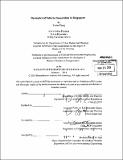| dc.contributor.advisor | P. Christopher Zegras. | en_US |
| dc.contributor.author | Xiang, Yunke | en_US |
| dc.contributor.other | Massachusetts Institute of Technology. Department of Urban Studies and Planning. | en_US |
| dc.coverage.spatial | a-si--- | en_US |
| dc.date.accessioned | 2014-05-23T19:41:40Z | |
| dc.date.available | 2014-05-23T19:41:40Z | |
| dc.date.copyright | 2014 | en_US |
| dc.date.issued | 2014 | en_US |
| dc.identifier.uri | http://hdl.handle.net/1721.1/87525 | |
| dc.description | Thesis: S.M. in Transportation, Massachusetts Institute of Technology, Department of Civil and Environmental Engineering, 2014. | en_US |
| dc.description | Thesis: M.C.P., Massachusetts Institute of Technology, Department of Urban Studies and Planning, 2014. | en_US |
| dc.description | Cataloged from PDF version of thesis. | en_US |
| dc.description | Includes bibliographical references (pages 59-63). | en_US |
| dc.description.abstract | Cities around the world are trying out a wide range of transportation policy and investment alternatives to reduce car-induced externalities. However, without a solid understanding of how people behave within the constraints from these policies, it is hard to tell which of these policies are really doing the job and which may be inducing unintended problems. The focus of this paper is the determinants of vehicle ownership in the motorized city-state context of Singapore. Using survey data from 1997 to 2008, a discrete choice model of vehicle ownership suggests that income dominates the household vehicle ownership decision. Further modeling, attempting to detect preference change over the years, suggests that the dynamics of income's influence on vehicle ownership is changing, perhaps reflecting a combination of the nation's increasingly high ownership costs and expanding transit system. All income groups have become less likely to own cars over time, with households in the lowest income groups apparently being affected the most. For 2008, the distance to rail transit stations had a discernible relationship with households' likelihood of owning more than one car, and accessibility and relative travel costs also influenced vehicle ownership. Including these variables, however, had very modest influence on improving model fit. | en_US |
| dc.description.statementofresponsibility | by Yunke Xiang. | en_US |
| dc.format.extent | 63 pages | en_US |
| dc.language.iso | eng | en_US |
| dc.publisher | Massachusetts Institute of Technology | en_US |
| dc.rights | M.I.T. theses are protected by copyright. They may be viewed from this source for any purpose, but reproduction or distribution in any format is prohibited without written permission. See provided URL for inquiries about permission. | en_US |
| dc.rights.uri | http://dspace.mit.edu/handle/1721.1/7582 | en_US |
| dc.subject | Civil and Environmental Engineering. | en_US |
| dc.subject | Urban Studies and Planning. | en_US |
| dc.title | Dynamics of vehicle ownership in Singapore | en_US |
| dc.type | Thesis | en_US |
| dc.description.degree | S.M. in Transportation | en_US |
| dc.description.degree | M.C.P. | en_US |
| dc.contributor.department | Massachusetts Institute of Technology. Department of Civil and Environmental Engineering | |
| dc.contributor.department | Massachusetts Institute of Technology. Department of Urban Studies and Planning | |
| dc.identifier.oclc | 879676216 | en_US |
